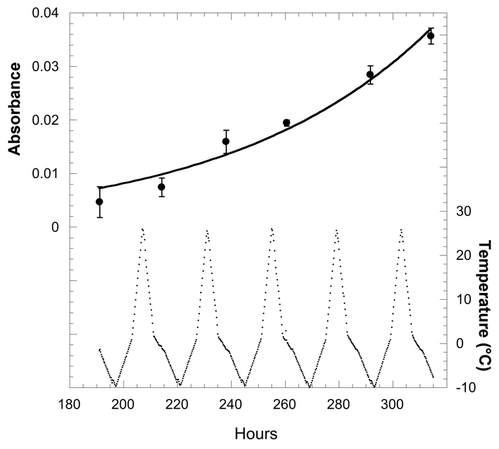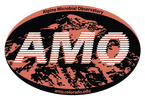|
by Lara Vimercati Extremophilic (organisms that live in extreme environments) members of the yeast Naganishia (previously classified as the Cryptococcus genus) represent the most abundant eukaryotes (organisms with a nucleus) from some of the harshest ecosystems yet discovered on Earth: the high elevations in dry valleys and slopes of the high Andes (Costello et al. 2009, Lynch et al. 2012, Vimercati et al. 2016). This Naganishia sp. (Phylum Basidiomycota) is most closely related to Cryptococcus friedmannii, which lives on rocks and tolerates extreme droughts, from the Dry Valleys of Antarctica and is also related to some of the dominant microeukaryotes of other extreme polar and glacial regions (Buzzini et al. 2012). Recent studies indicate that Naganishia species from the high Andes are among the most resistant organisms to UV radiation (Pulschen et al. 2015) and our work on a Naganishia strain from the high Andes showed that it is able to grow continuously in liquid culture when exposed to extreme thermal fluctuations. In this experiment we simulated the diurnal freeze-thaw cycles that occur on a continuous basis at elevations above 6000 meters above sea level in the Atacama region cycling up to a high of 30°C during the day and down to a low of -10°C at night, an amplitude of 40°C in a 24-hour period (Vimercati et al. 2016). These studies provide evidence that Naganishia sp. has the capacity to grow during freeze-thaw cycles in the field, and that it may be able to mainly do that during periods of higher soil moisture. Given its unique ability to survive under multiple environmental stressors, Naganishias may be a model organism for astrobiology and studies on stress resistance in eukaryotes, and its adaptive strategies could be crucial as predictive tools in investigating the limits of life.  Figure 1. Exponential growth of the Naganishia sp. isolate (top panel) during freeze-thaw cycles of 27°C to -10°C as measured with data loggers in the growth chamber (bottom panel). Higher absorbance values mean more growth. Temperatures in the actual growth medium were comparable to these in the chamber, but showed a lag of about 1 hour (data not shown). All cultures froze solid every night and completely melted every day. It is not clear from these data if growth was continuous or occurred only during periods of liquid water since all sub-samples were taken when cultures were melted. Each point represents the mean of four replicate cultures (error bars are standard error of the mean). References:
Buzzini P, Branda E, Goretti M, Turchetti B (2012) Psychrophilic yeasts from worldwide glacial habitats: diversity, adaptation strategies and biotechnological potential. FEMS Microbiol Ecol 82: 217–241. Costello, E.K., S.R.P. Halloy, S.C. Reed, P. Sowell, S.K. Schmidt. 2009. Fumarole supported islands of biodiversity within a hyperarid, high-elevation landscape on Socompa Volcano, Puna de Atacama, Andes. Appl. Environ. Microbiol. 75: 735-747. Lynch, R.C., King, A.J., Farías, M.E., Sowell, P., Vitry, C. and Schmidt, S.K., 2012. The potential for microbial life in the highest‐elevation (> 6000 masl) mineral soils of the Atacama region. Journal of Geophysical Research: Biogeosciences, 117(G2). Pulschen, A.A., Rodrigues, F., Duarte, R.T., Araujo, G.G., Santiago, I.F., Paulino‐Lima, I.G., Rosa, C.A., Kato, M.J., Pellizari, V.H. and Galante, D., 2015. UV‐resistant yeasts isolated from a high‐altitude volcanic area on the Atacama Desert as eukaryotic models for astrobiology. MicrobiologyOpen, 4(4), pp.574-588. Vimercati L, Hamsher S, Schubert Z, Schmidt SK. 2016. Growth of a high-elevation Cryptococcus sp. during extreme freeze-thaw cycles. Extremophiles. 20:579–588.
0 Comments
|
AuthorVarious lab members contribute to the MoM Blog Archives
October 2023
Categories |

 RSS Feed
RSS Feed
